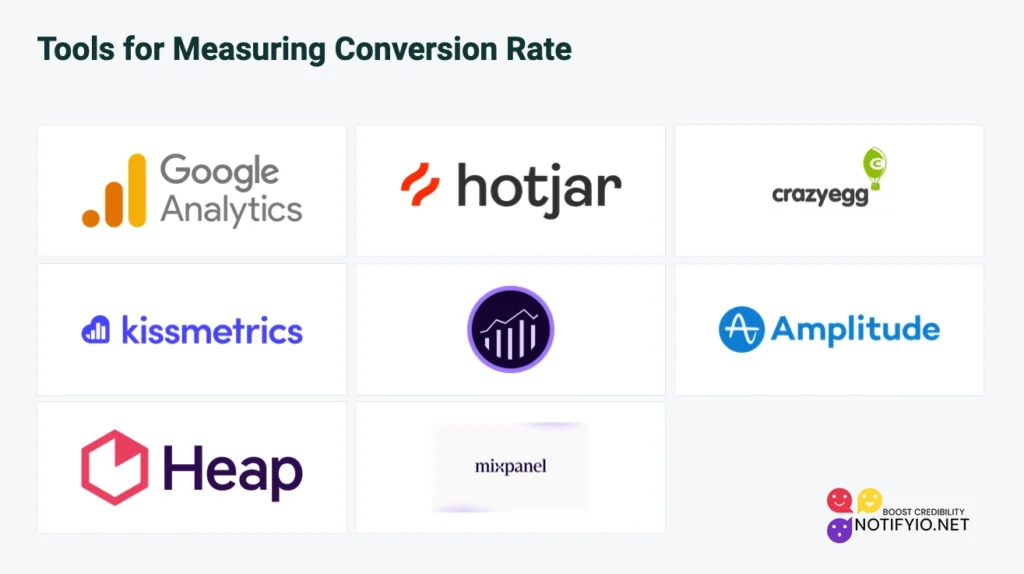Welcome to the ultimate guide on understanding conversion rates! In the world of digital marketing, knowing about conversion rates is crucial. This figure is vital for measuring your marketing wins and improving sales. We will guide you through conversion rate basics, how to find them, and recommend some helpful calculators.
Whether you’re just starting with marketing metrics or want to refine your conversion rate optimization, we’ve got you. So, let’s dive in and turn those website clicks into real customers!
Key Takeaways
- Conversion rate is a vital digital marketing metric
- Learn to calculate conversion rates for better business insights
- Discover tools and calculators for easy conversion rate tracking
- Understand the impact of conversion rates on marketing success
- Explore strategies for effective conversion rate optimization
Understanding Conversion Rate and Its Importance
Conversion rate is how well a site changes visitors into customers. It’s an important number for businesses. It shows success and helps in making marketing better.
What is a Conversion Rate?
It is the number of visitors that do a certain action on a website. This action might be buying something or signing up for a newsletter. To get this rate, divide the number of actions by the total visitors.

Why Conversion Rate Matters in Digital Marketing
Having a high conversion rate means your marketing is effective. It’s important because it shows if your efforts are paying off. A good conversion rate means your business gets more.
- Understand customer behavior
- Improve user experience
- Boost revenue
- Optimize marketing spend
Common Conversion Goals for Websites and E-commerce

Each business has its unique conversion goals. For online stores, a high rate means more sales. But there are other common goals as well, such as getting more sign-ups or downloads.
- Email sign-ups
- Free trial registrations
- Downloads of content
- Contact form submissions
Google Analytics is a powerful tool for measuring conversions. It helps in tracking and improving your site’s performance. Working on Conversion Rate Optimization (CRO) can enhance your success in marketing.
How to Calculate Conversion Rate
Knowing the conversion rate formula is key for digital marketers and website owners. This metric measures your success in getting visitors to act how you want. It helps you tweak and grow your online efforts.
The Conversion Rate Formula

To find your conversion rate, just follow this simple formula. First, count up how many visitors take the action you want. Then, divide that by the total number of visitors. After that, multiply it by 100. So, if a page gets 1,000 visitors and 50 sign up for your newsletter, the rate is 5%.
Step-by-Step Guide to Calculating Conversion Rate
Start with setting clear conversion goals for your site. These goals might be email sign-ups, sales, or form fills. Then, keep track of how many visitors your site gets and how many meet your goals over time. Plug these numbers into the rate formula to see your success percentage.
Tools for Measuring Conversion Rate
Google Analytics stands out for watching over your website’s traffic and goals met. It has features for tracking conversions and making reports just for you. It also works well with other tools like heat maps and conversion calculators. Together, these tools help you see how you’re doing on all your conversion goals, from email ads to your site’s main page.
How high your rate should be varies with what you’re selling and what you consider success. Normally, e-commerce does well at 1% to 3%, with over 3% being really good. For getting leads or new subscribers, you might even aim higher.
FAQ
What is a conversion rate?
A conversion rate is the % of visitors who do something on your site. This might be buying something, joining a newsletter, or signing up. It helps you see how well your site’s doing and what you can do better.
Why is conversion rate important in digital marketing?
The conversion rate is key online because it connects directly to your profit. A higher rate gets you more customers or leads without needing more traffic. This leads to more money and a better ROI from your ads or campaigns.
What are some common conversion goals for websites and e-commerce platforms?
Goals vary but often include buying something on e-commerce sites or joining a newsletter. You might also aim for people to sign up for premium content, complete forms, or make user accounts. It all depends on what your site wants to achieve.
How do I calculate conversion rate?
To find the rate, use this simple formula: (Conversions / Visitors) x 100. For instance, if 50 people buy something out of 1,000 visitors, it’s (50 / 1,000) x 100 = 5%.
What tools can I use to measure conversion rate?
Google Analytics is great for this, and it’s free. It fits well with websites, landing pages, and ad campaigns. There are also other tools and calculators for fine-tuning your conversion strategy.

What is a good conversion rate?
How high your rate should be varies with what you’re selling and what you consider success. Normally, e-commerce does well at 1% to 3%, with over 3% being really good. For getting leads or new subscribers, you might even aim higher.




Leave a Reply